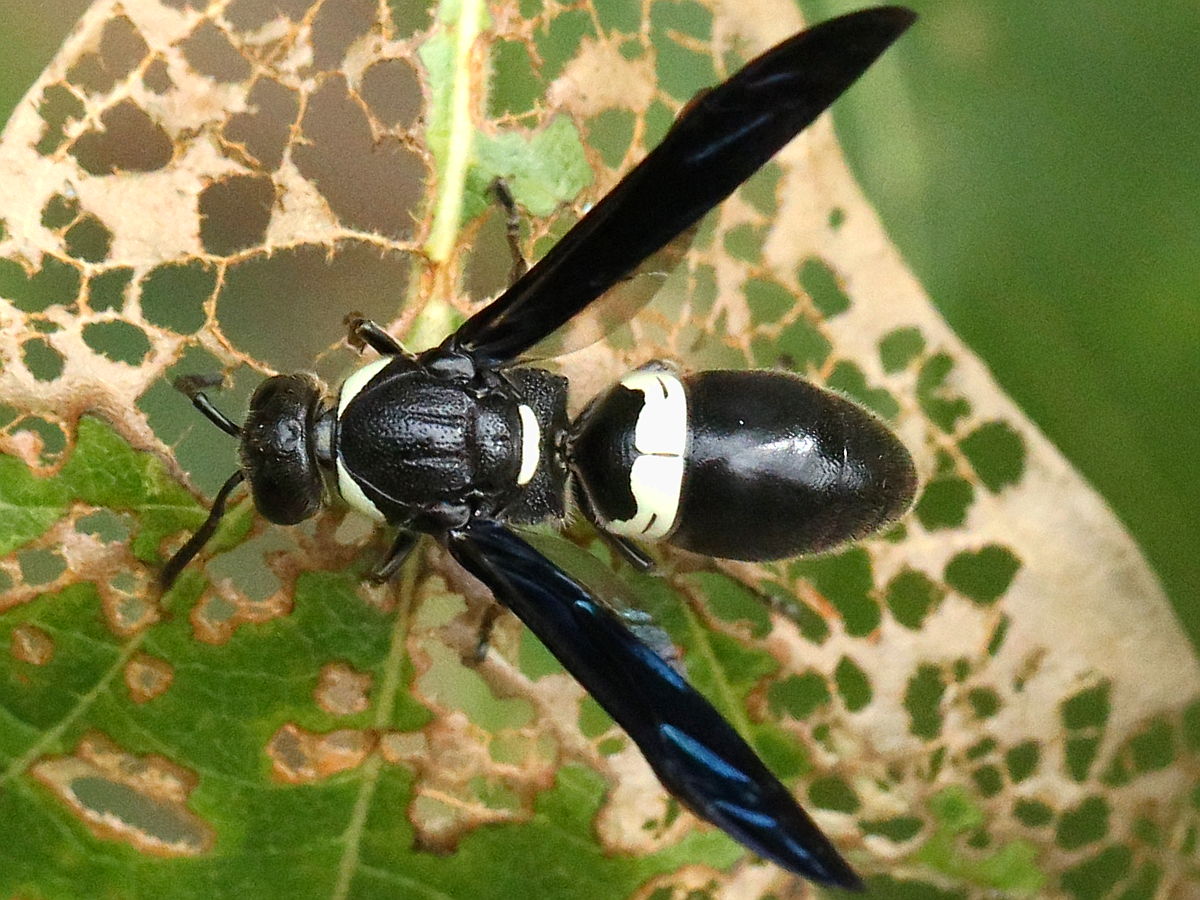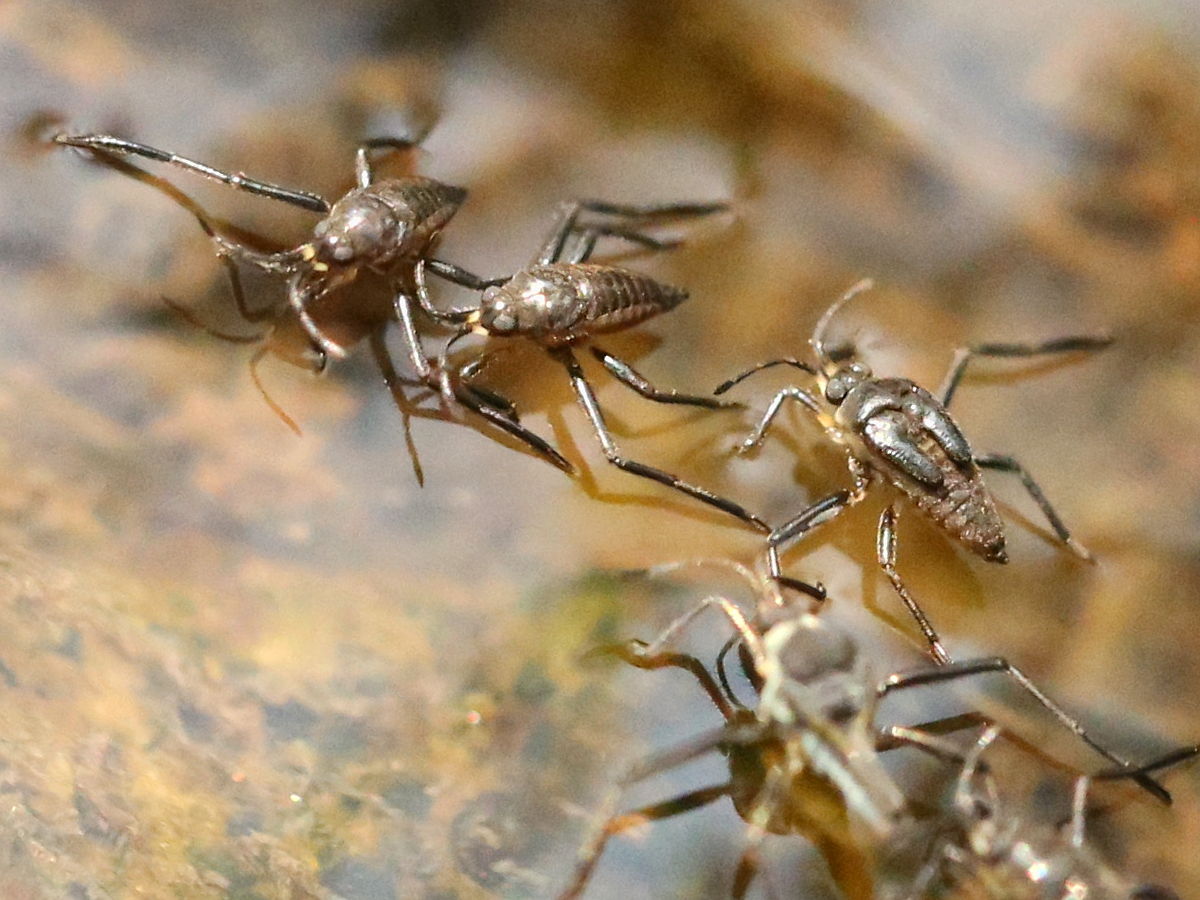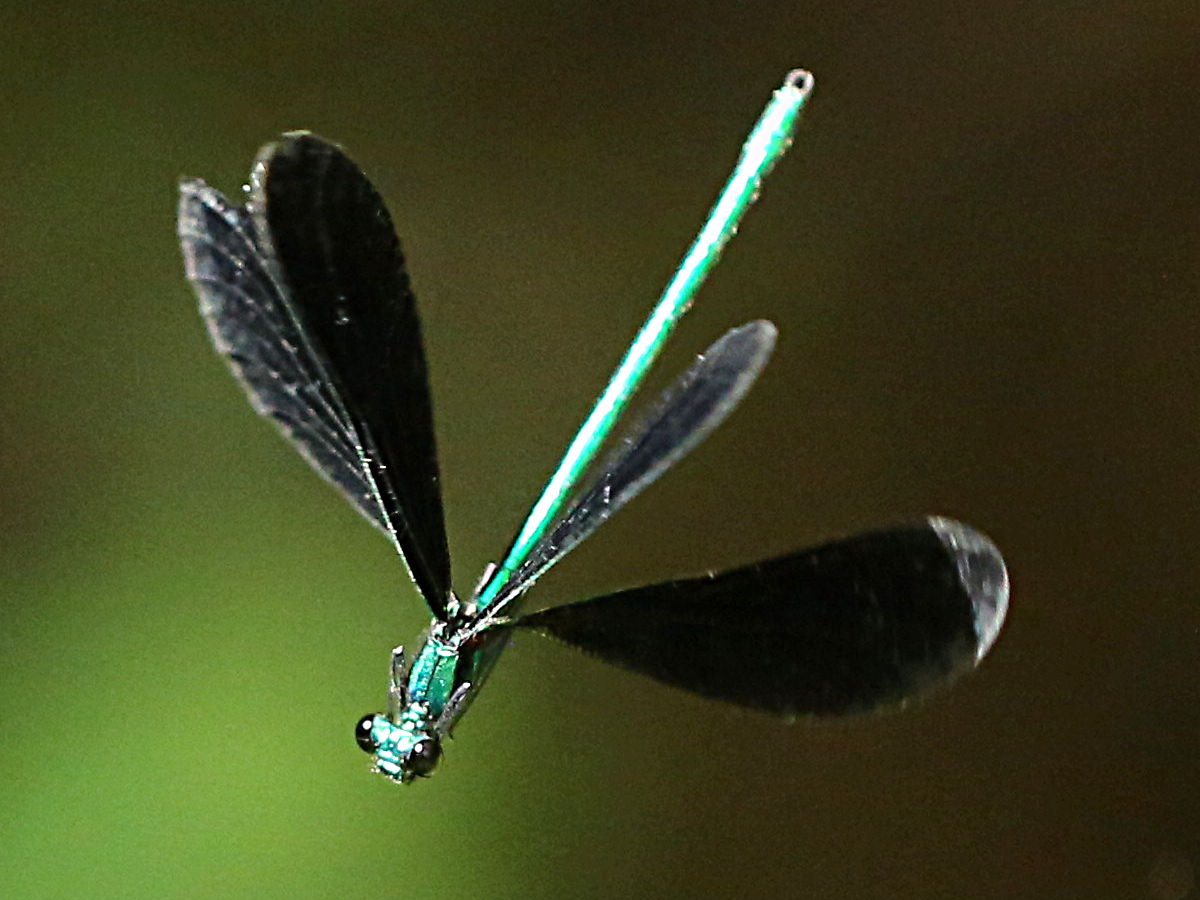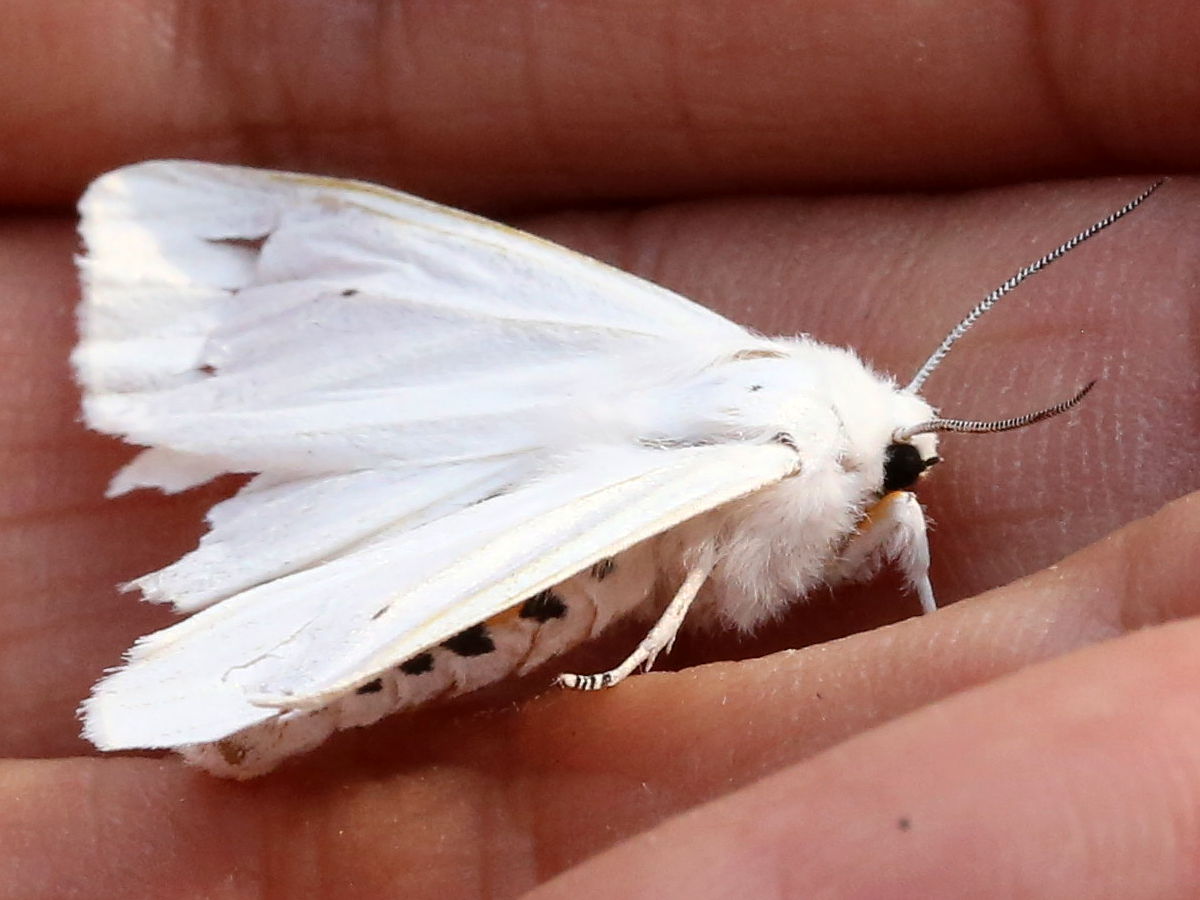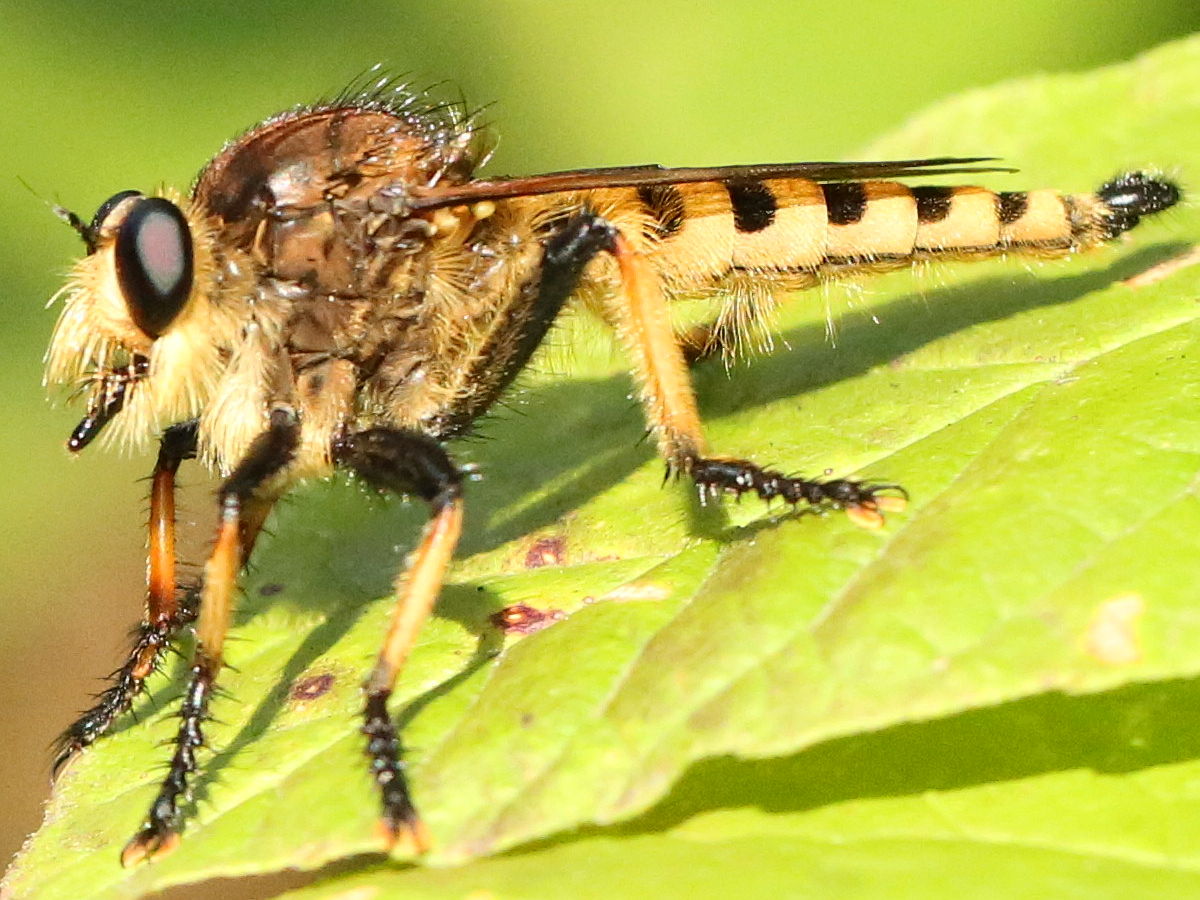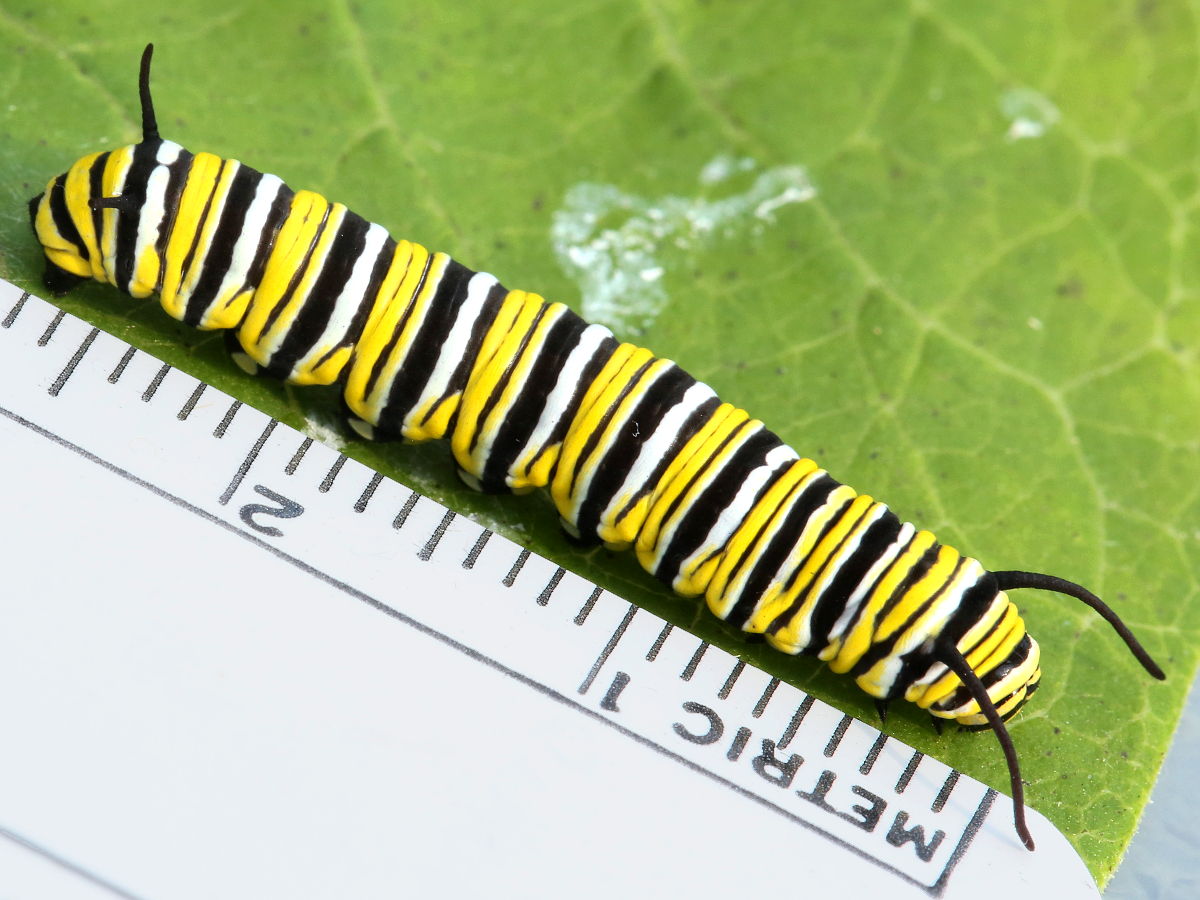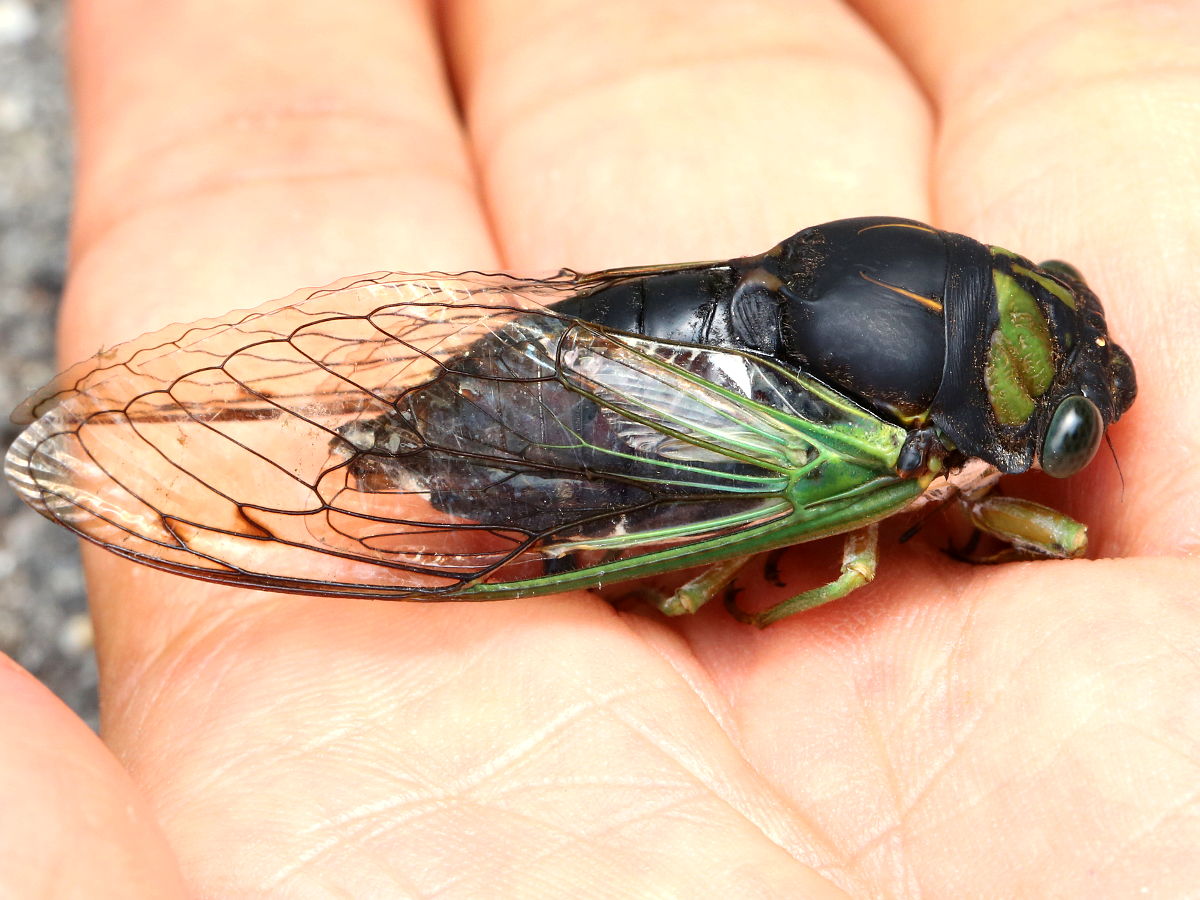
After cicadas emerge from underground in July, adult wasps also emerge, after overwintering underground as larvae.
Male wasps dig their way out first, leaving exit holes like those on the right of the photo at right.
The larger holes on the left of the photo are new burrows dug by females, for the next generation of larvae.
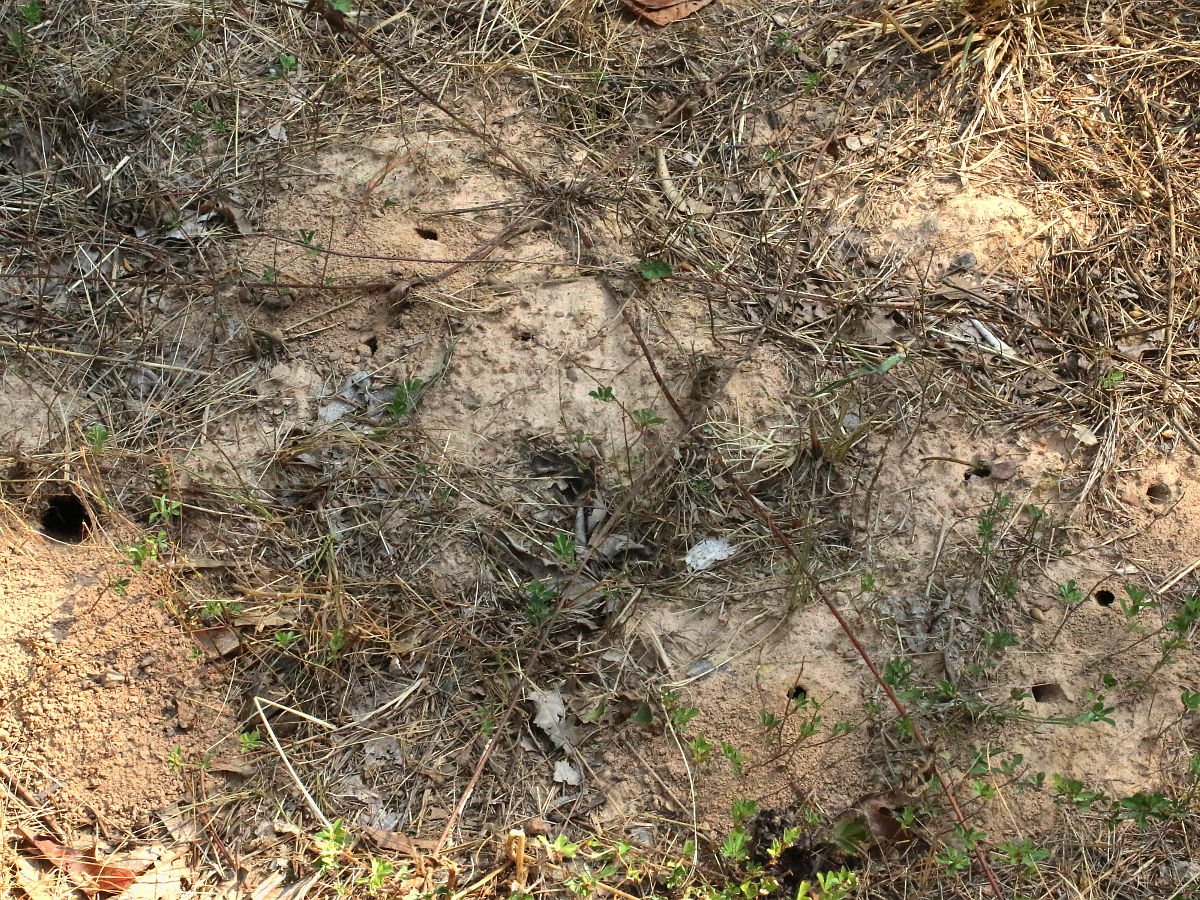
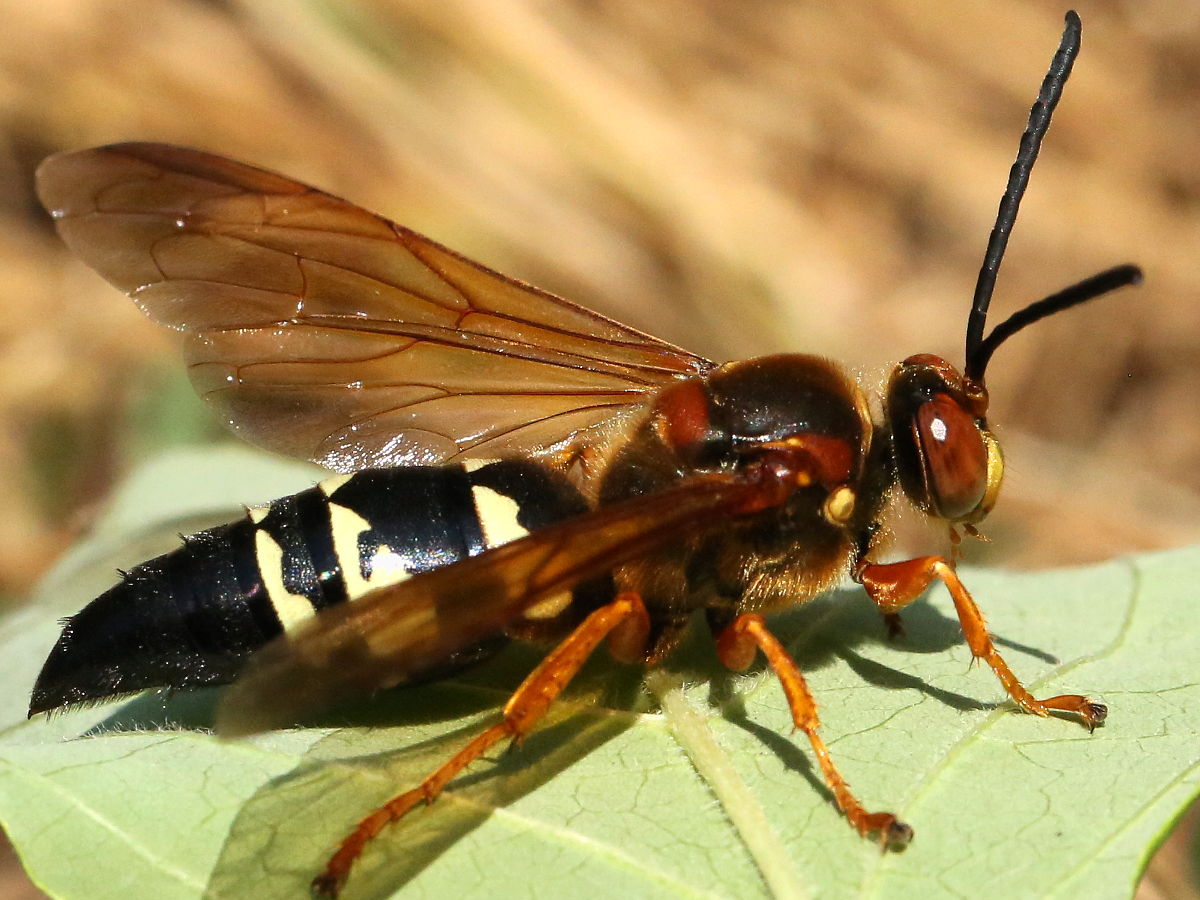
They like to perch on a low object and orient themselves to watch for females.
Often they take to the air to patrol their little fiefs, chasing anything that flies to see if it is a rival male or a virgin female.
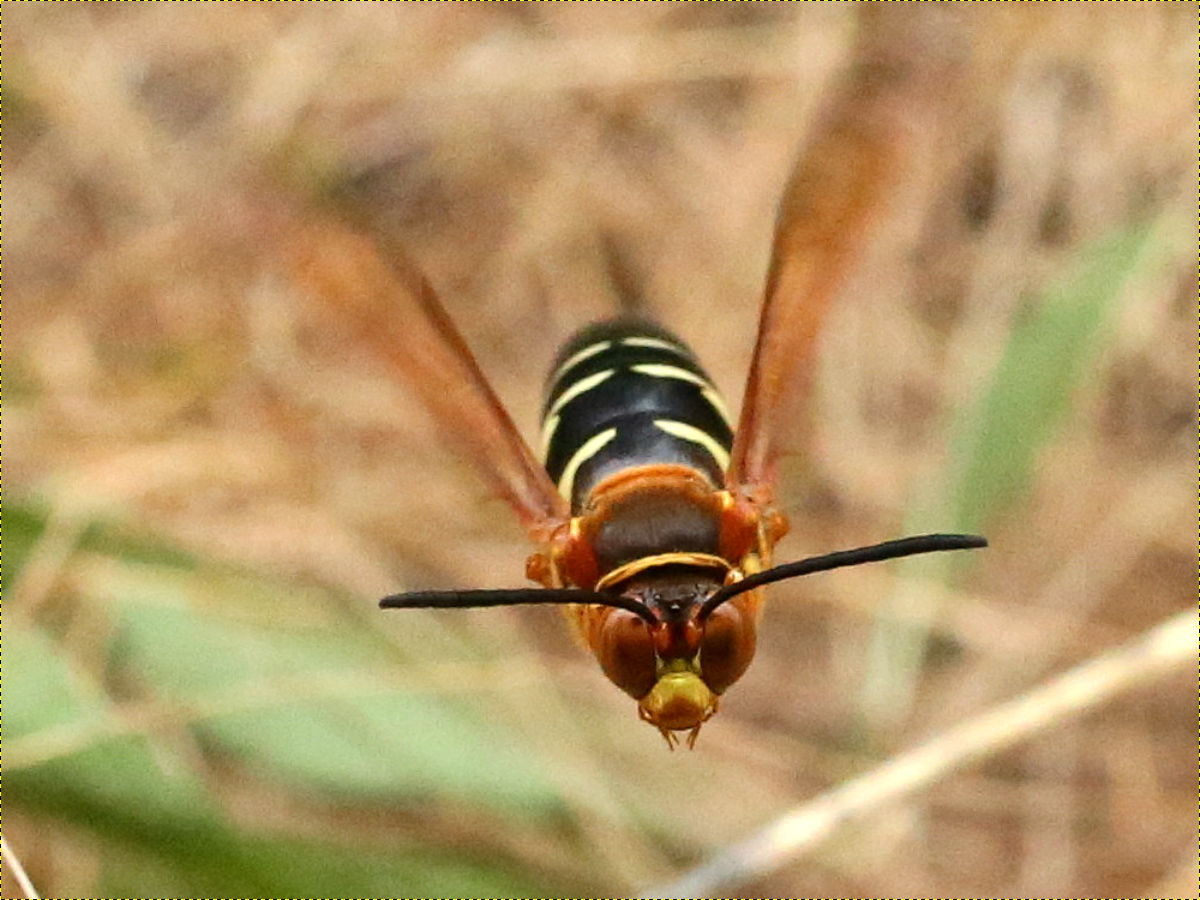

If you offer your hand, they may climb aboard to see if this perch has a good view, again orienting themselves to scan their territory.
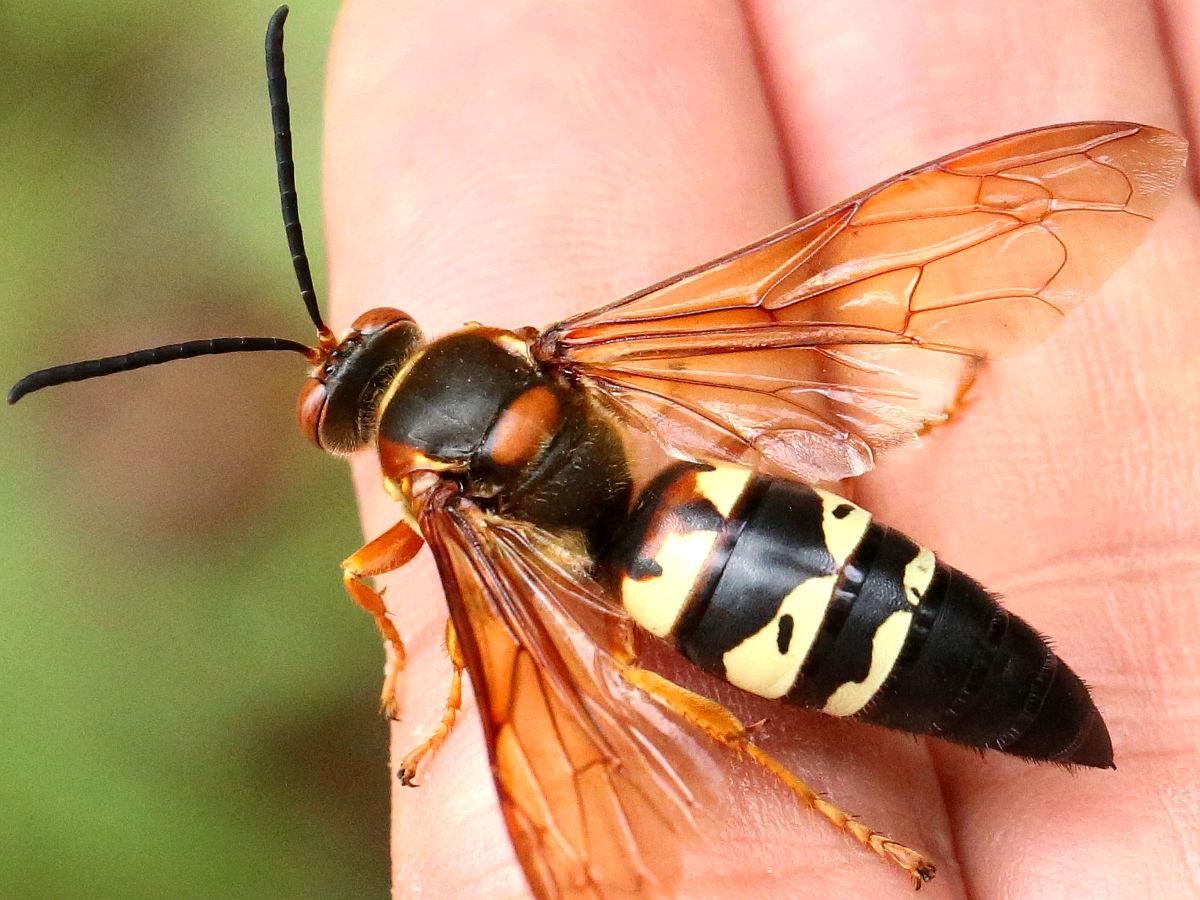
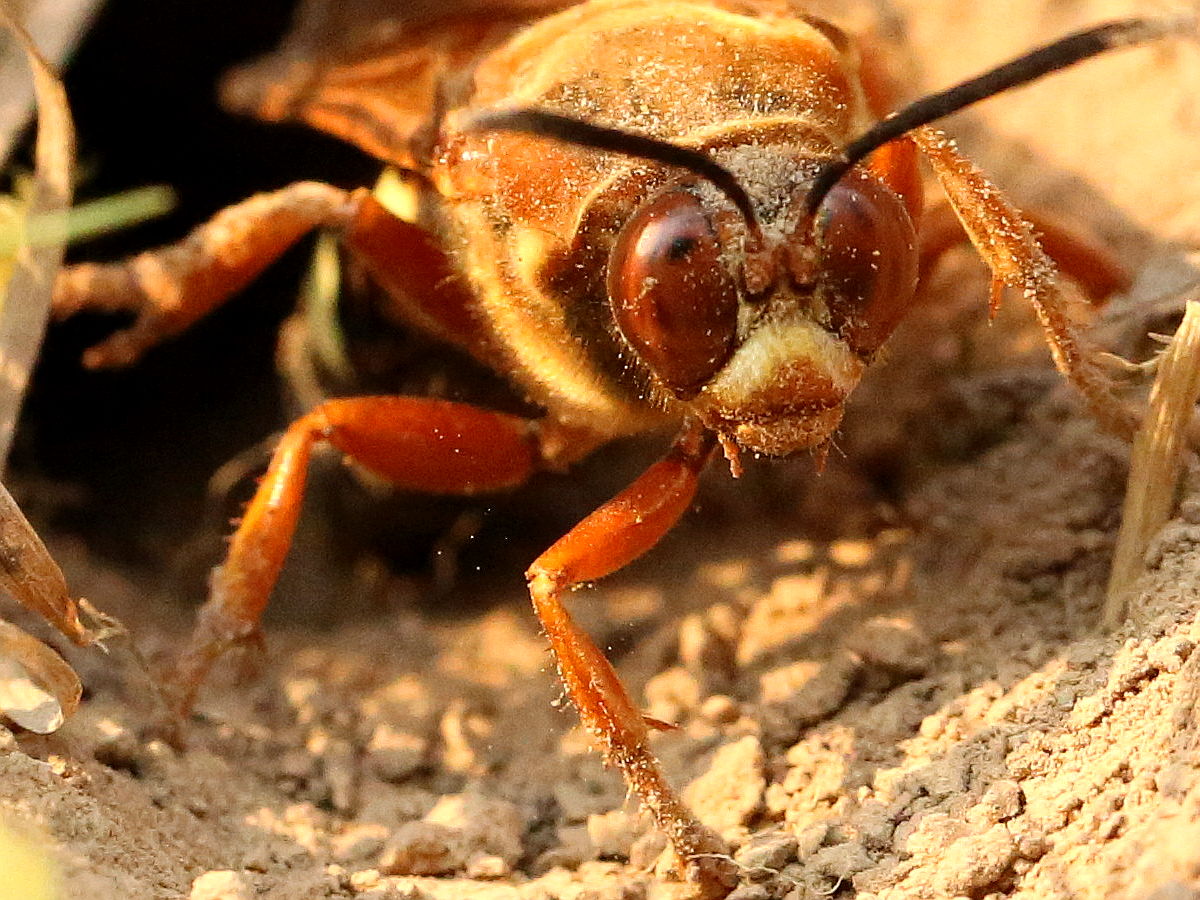
They emerge about 2 weeks after the males, and will mate only once in their life.
The male patrolling the area where she emerges gets first shot at mating with the virgin female, end-to-end style.
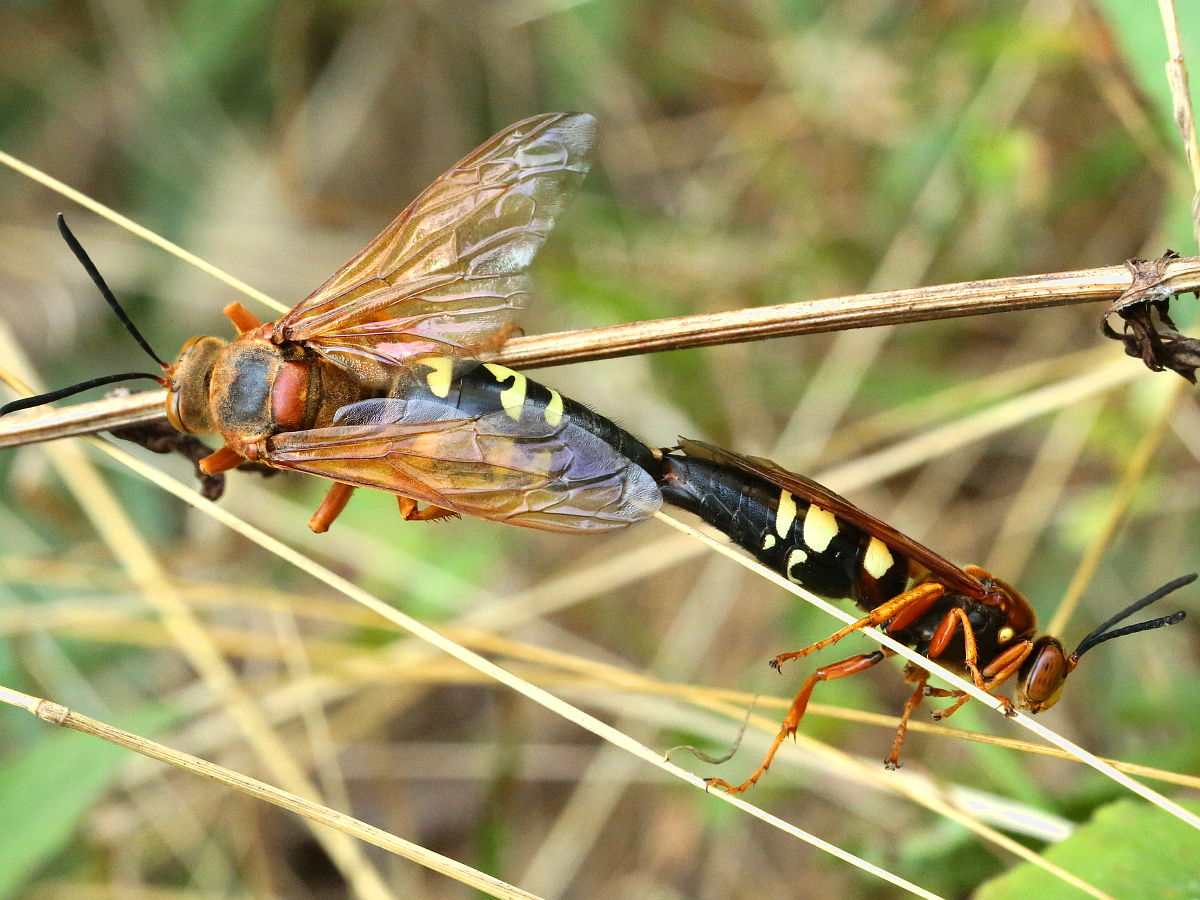
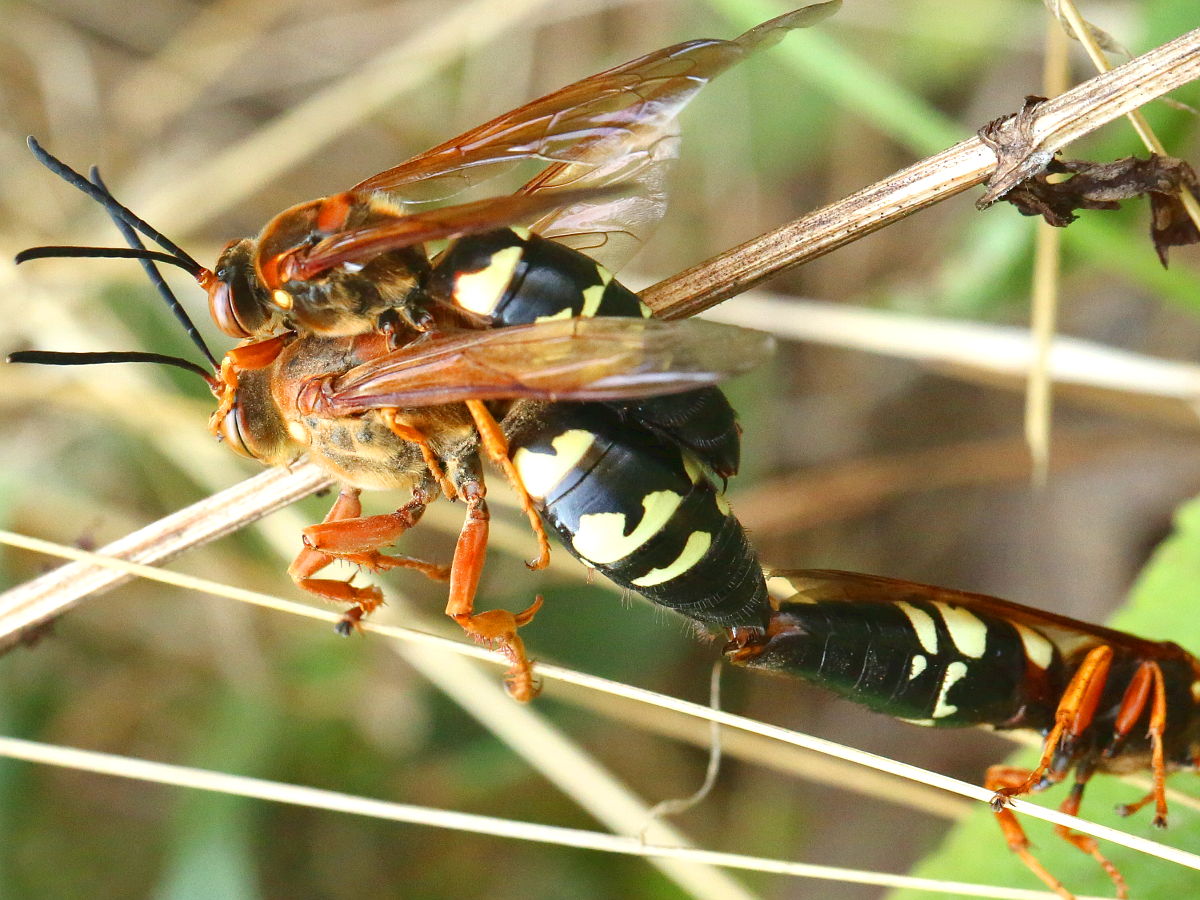
The female's stinger is safely occupied in this position, and the couple may take your hand as a haven from competing males.
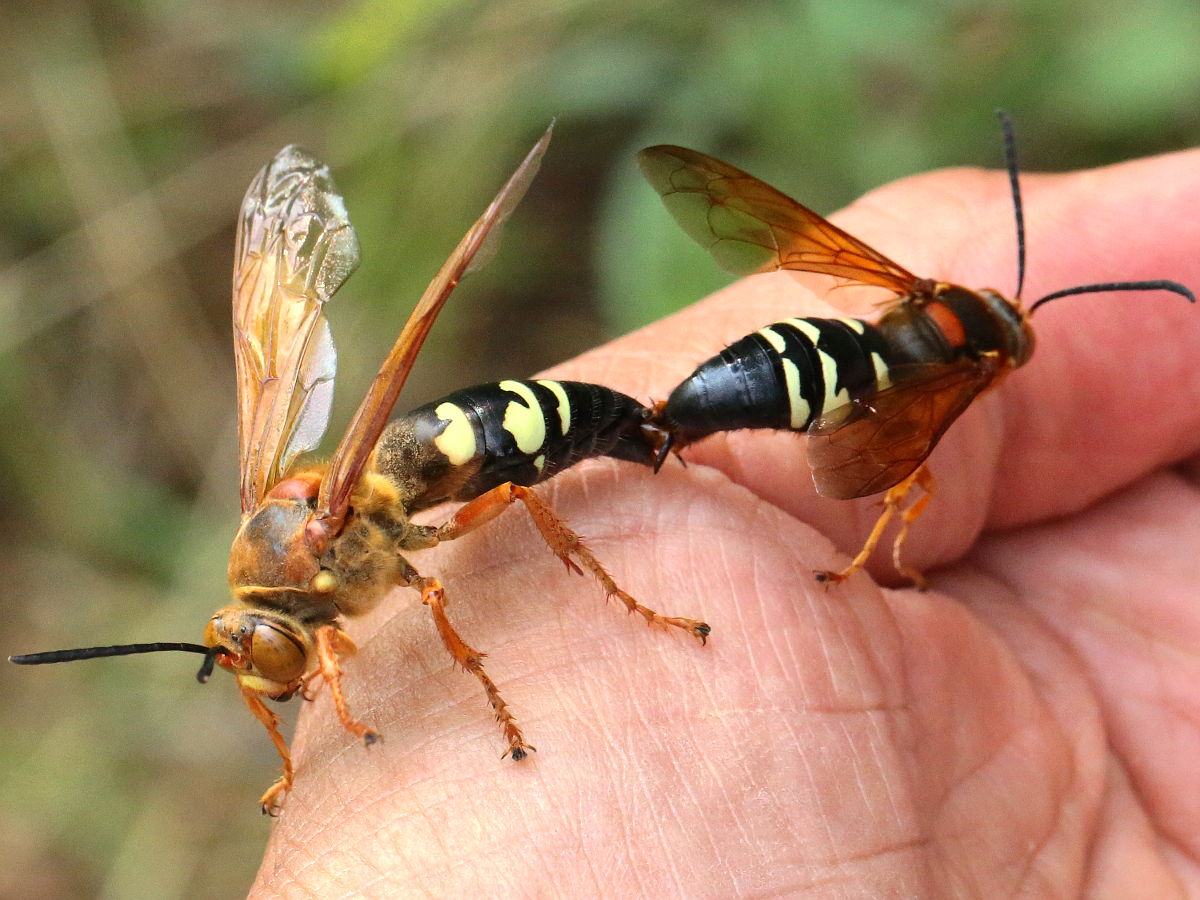
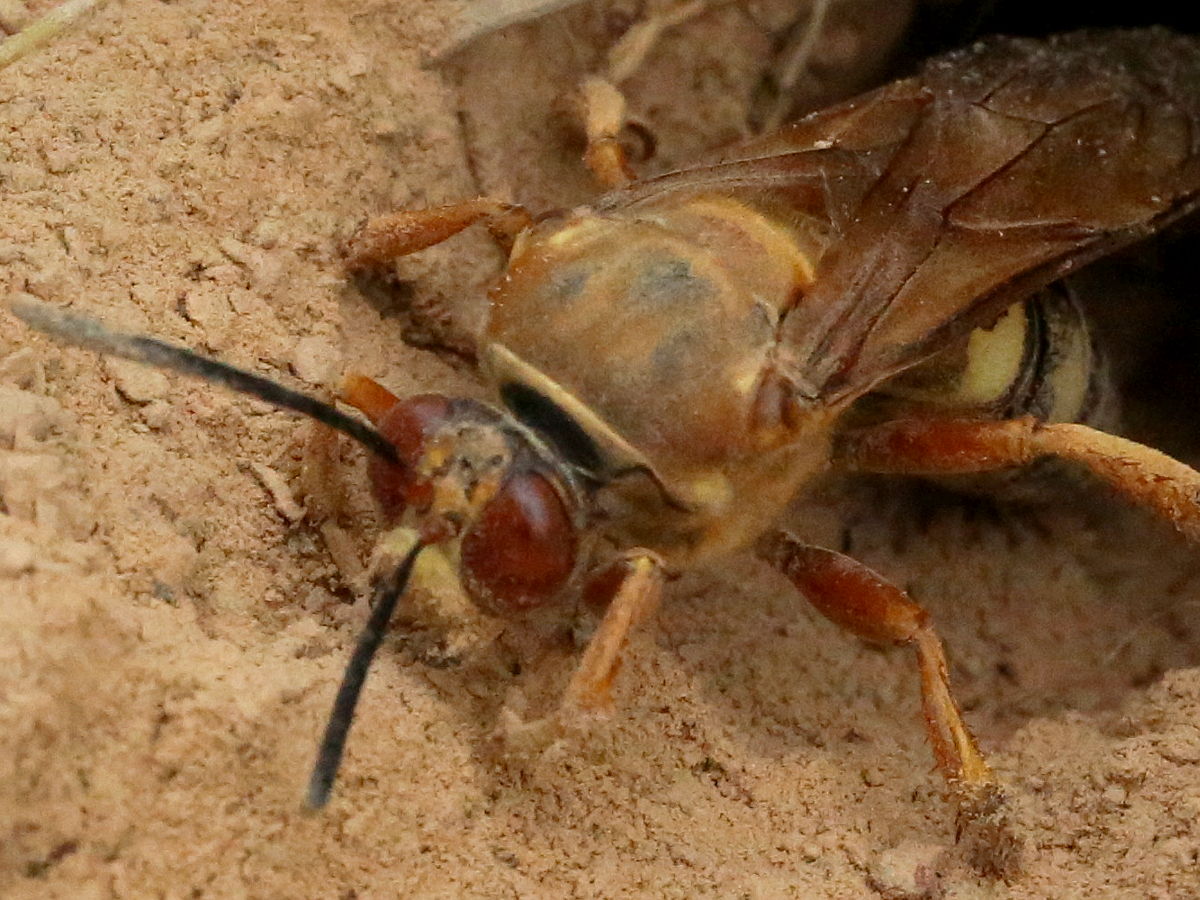
When she has paralyzed a cicada (often bigger than she), she drags the immobilized prey down her burrow, and lays an egg upon the cicada.
The larva that hatches will feast on the living flesh of the cicada until reaching pupa stage, then will pupate over the winter.

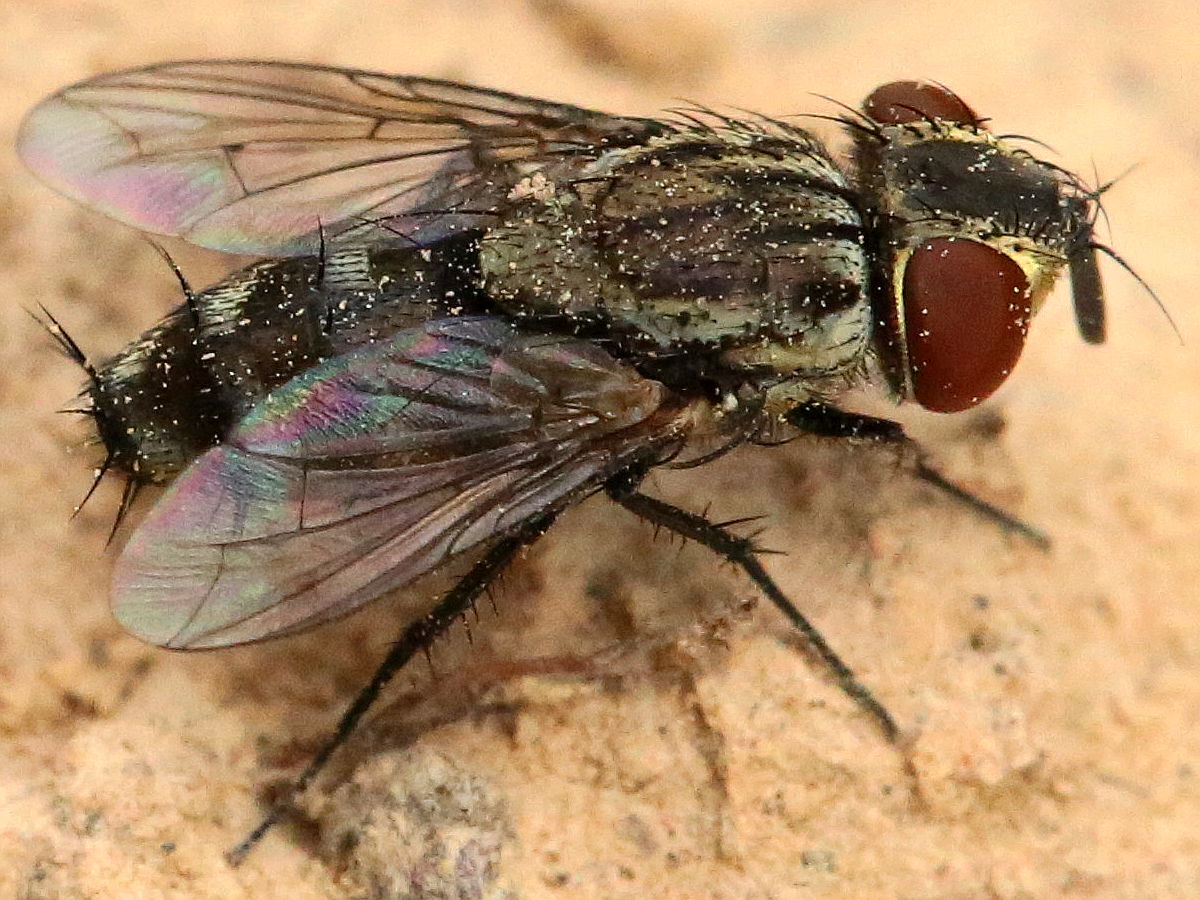
When the wasp leaves, this tiny fly goes down the tunnel, and lays a live larva in the living cicada, and the larva eats the cicada.
The confrontation between wasp and fly females in the photo at right shows the relative sizes of these natural enemies.
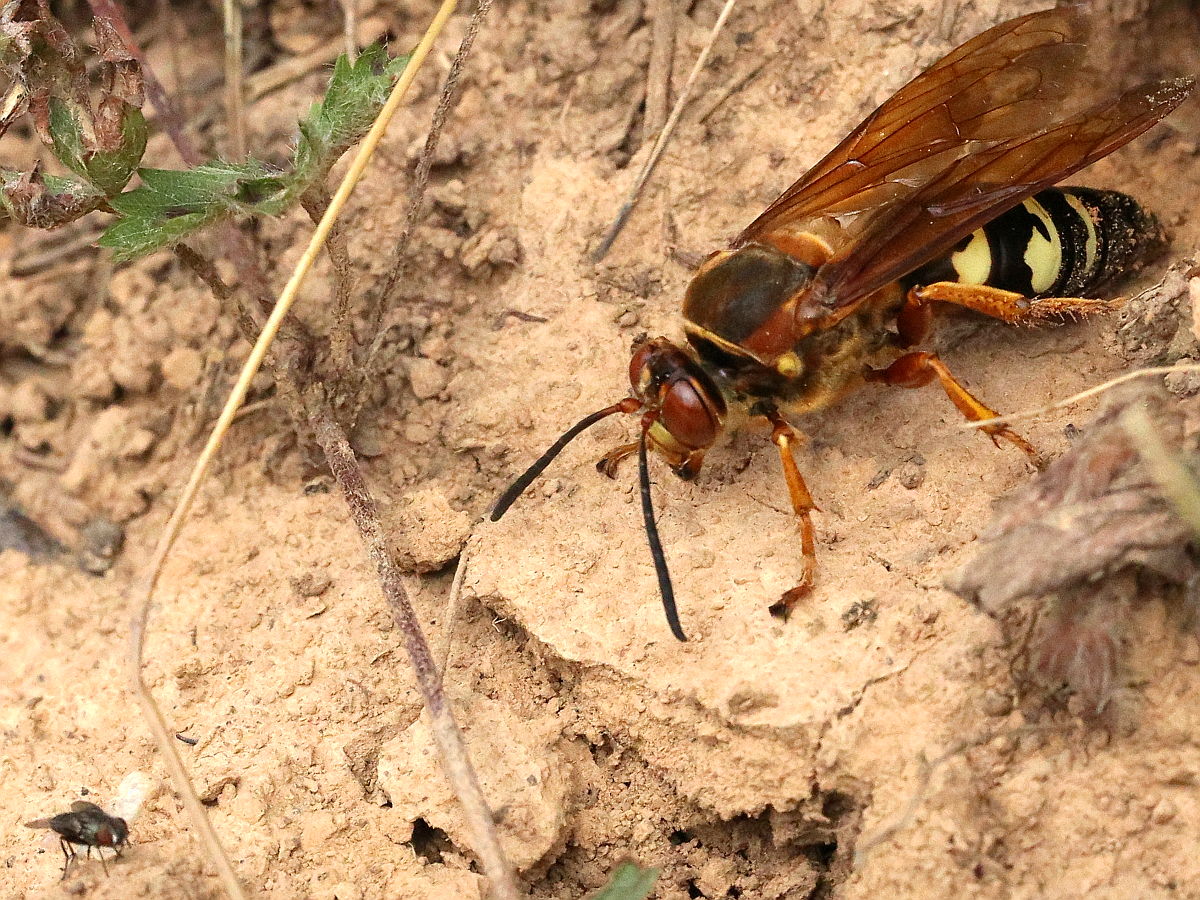
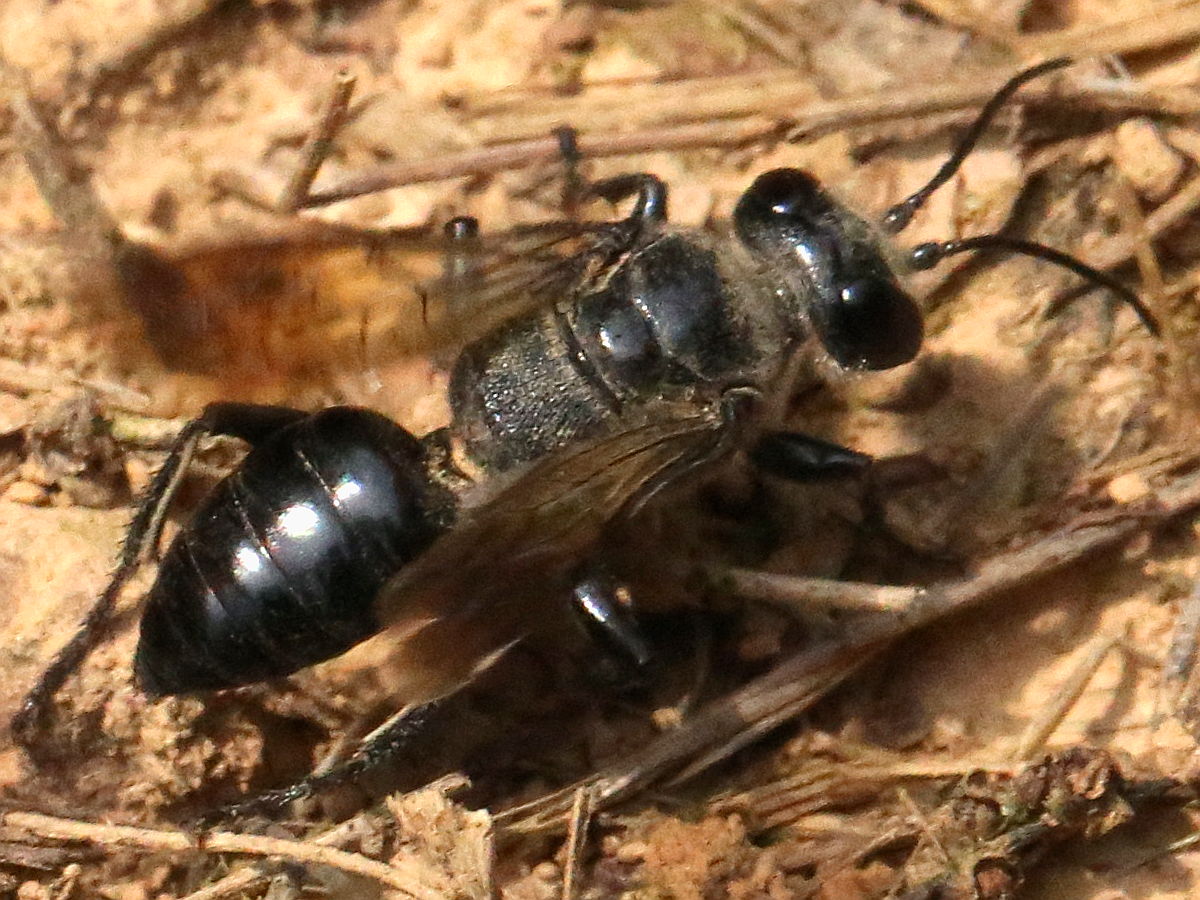
This little Digger Wasp (a smaller relative of the Killer) wanders around some of these exit holes.
Soon she finds one and dives into the hole, using it as her little burrow.
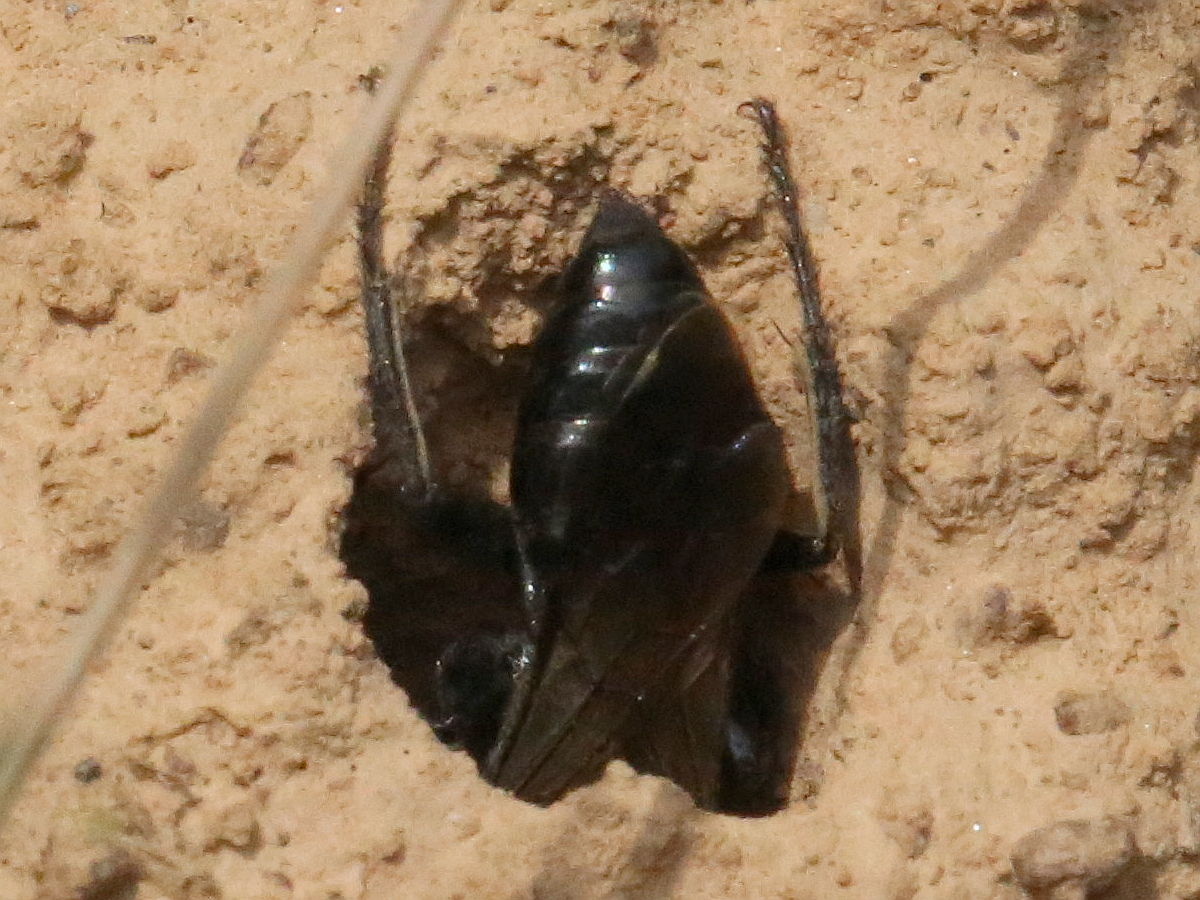
The trail is lined with trees where cicadas sing. This is Cicada Killer heaven, and also home to other critters, such as the Four-toothed Mason Wasp, Monobia quadridens.
